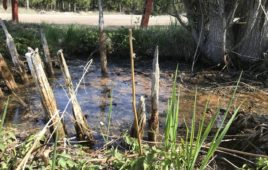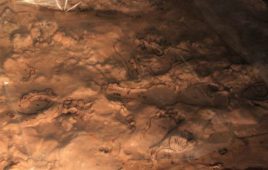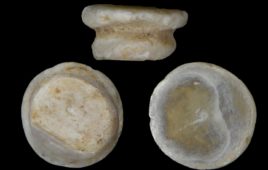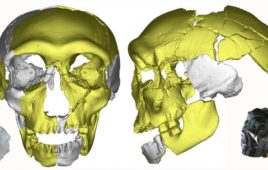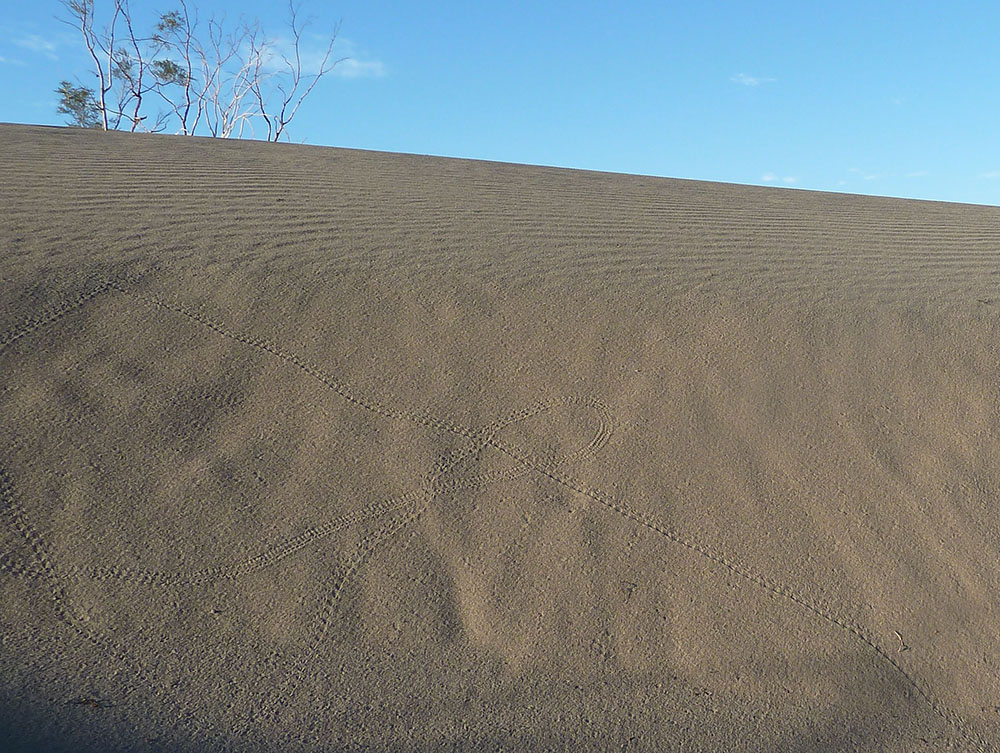
Caption: Trackways of modern arthropods on a desert dune. Examples like these, found preserved as fossils from millions of years ago, form the data in this study. Credit: University of Portsmouth
A new study shows that animal life on land began with a few short bursts of marine creatures searching for dryer land.
Researchers from the University of Portsmouth have traced fossils to show how the colonization of land initially took place, the first time a pattern has been identified using trace fossils to track the evolution of animal behavior and the ways in which they interacted with new environments.
The researchers examined trace fossil data spanning a 200-million-year period of Earth during a seven-year long analysis.
According to the study, the initial invasion happened across the world on the fringes between land and oceans. An expansion then took place that spread into the floodplains, rivers, deserts and lakes.
“When the first animals emerged from the oceans they had a blank canvas, there were no other animals there and so they diversified rapidly both in how they behaved and in the ecological roles, or the part they played, in the theatre of life,” Nicholas Minter, Ph.D., of the University’s School of Earth and Environmental Sciences, said in a statement.
Trace fossils are able to give the framework of an animal’s life including who was there, when and how they behaved. Minter examined hundreds of rock formations around the globe.
According to the researchers, the evolution step-change can be seen in the shape and sizes of animals but the study is the first time it has been shown for their behavior.
For example, the scientists believe that spiders came from the same group as crabs and slugs and snails came from the same group as squid and cuttlefish.
“Not many from any one group or Phylum, made the transition from sea to land or fresh water,” Minter said. “What’s surprising is the leaps in evolution follow the same pattern—an early evolutionary burst of rapid diversification and a long period of relative calm—each time animals conquered new habitats, first the margins between sea and land, then floodplains, followed by rivers, deserts and lakes.
“Each burst was an evolutionary experiment, yet the results are very similar,” he added. “As scientists, we know experiments tend to have different outcomes if you change the parameters but in this case, there is a consistency which suggests a fundamental constraint on the behavioral and ecological roles fulfilled by animals on land.”
Minter said the results will open up a plethora of research opportunities.
“We now have a framework we can use to apply to other questions and allows us to compare ancient and living communities,” Minter said. “This framework may help us understand if modern communities are undergoing fundamental changes, as ancient ones have in the past, for example, in response to climate change.”
The study was published in Nature Ecology & Evolution.

